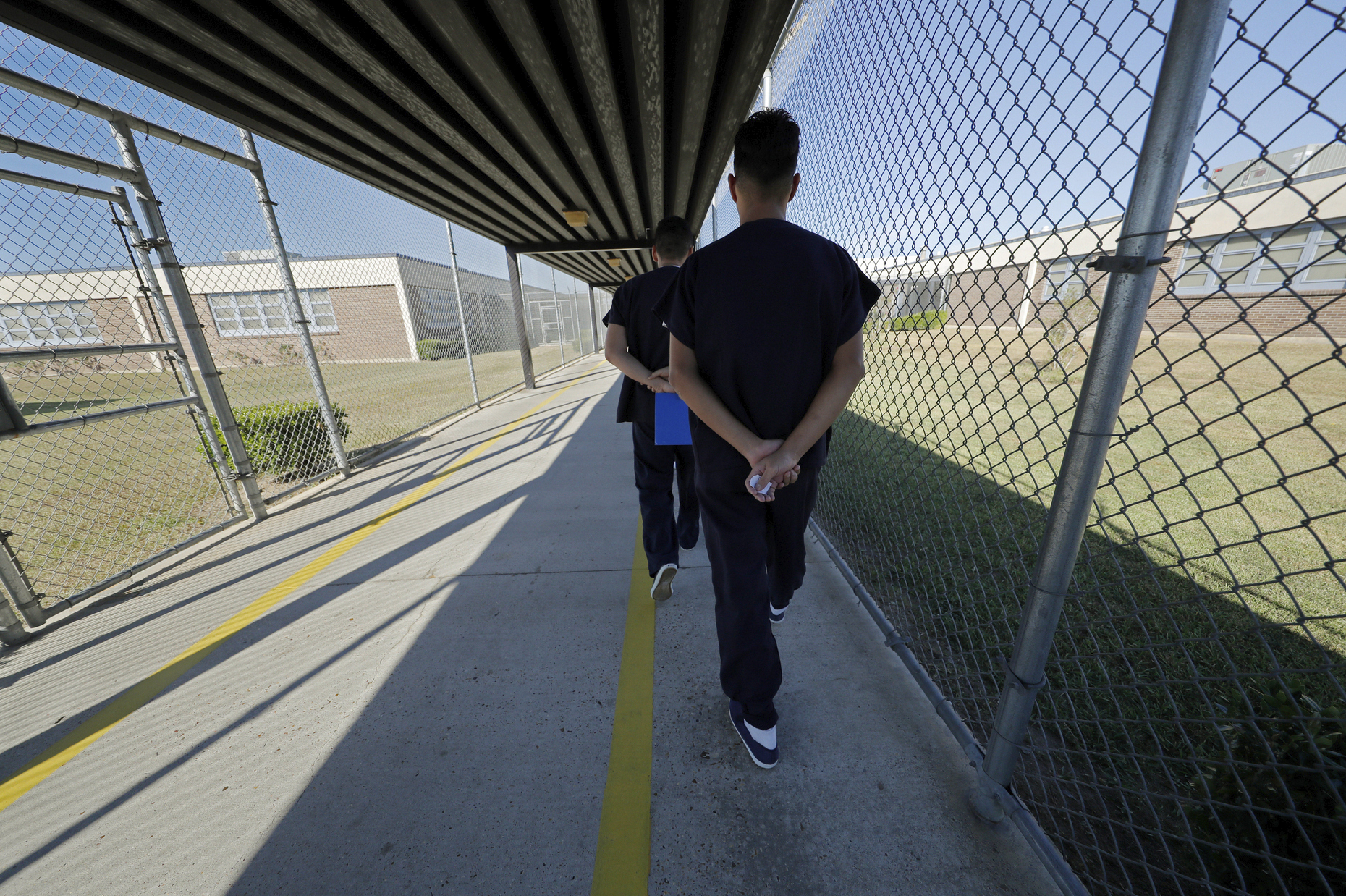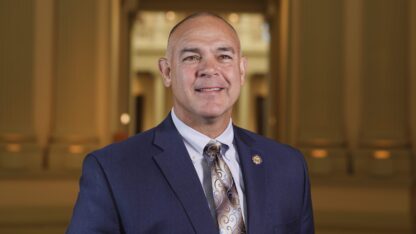Asylum seeker, Raudel, who wants to use only his first name for fear of being targeted, says he had no choice but to flee Cuba and come to the United States. He said he was routinely attacked by the police there for his political views that opposed the government.
“They took out all of my teeth,” Raudel says, “and they forced me to abandon my country.”
When Raudel made it to the U.S. border, he was sent to Adams Correctional facility in Mississippi to begin the legal asylum process and have a “credible fear” interview to declare why he came to the U.S. He was then transferred to River Correctional in Louisiana. In total, he was in detention for about five months. And, he says, COVID-19 conditions during his time in detention weren’t great.
He says COVID-19 positive detainees were put together in one room. There was very little social distancing or mask wearing, and both sick and healthy people were mixed together during transfers.
“Many people had coronavirus,” he says. “And they weren’t worried about it.”
Shortly after COVID-19 first hit the U.S., the Immigration and Customs Enforcement agency, or ICE, emptied its detention facilities to help slow the outbreak. But in the last year, amid a surge of migrants crossing the southern border, ICE has detained tens of thousands of migrants.
Now, the agency is under fire from immigration advocates for how it’s handling COVID-19 protocols while the highly transmissible Delta variant surges across the country. NPR analysis of publicly available ICE data on COVID-19 online shows the weekly percentage of COVID-19 positive detainees in monitoring or isolation has more than doubled since June from 2% of the population to around 6% as of last week.
Immigration advocates sound the alarm
Immigration attorney Mich Gonzalez with Southern Poverty Law says ICE’s New Orleans Field office has been holding, moving and releasing detainees under conditions that are not pandemic safe. ICE data show rapid declines and increases in the number of people with COVID-19 over time.
“It’s a place where people are being transported and transferred out, transferred in and transferred out. Of course, they’re going to be exposed there,” Gonzalez says. “The precautions that are supposed to be taken don’t really work well because they violate their own protocols.”
Another immigration attorney, Max Meyers, with the Mississippi Center for Justice says his clients have described unsafe transfer processes.
“I’ve had clients that have described to me in detail being transferred from Texas to Mississippi and being transported, in some instances, maskless, as well as sitting one person next to another on airplanes and then upon arrival being grouped into medium sized multipurpose rooms.”
But, ICE spokesman Dexter Henson says they do follow their transfer and COVID-19 protocols to move people only when absolutely necessary and make sure they are not sick.
“We’re doing everything we can to make sure that those that are under our control, that they have ties to the community and a support network near the location that they’re detained,” Henson says.
ICE’s COVID-19 transfer protocols indicate that when it’s necessary to transport individuals with confirmed or suspected COVID-19, they can be transported in cars, but, “everyone in the vehicle must wear a mask.”
Henson also says that the best way to stop spread is vaccination. He says the COVID-19 vaccination rate across ICE detention facilities is as high as 70%.
ICE data likely incomplete
Still, the Department of Homeland Security’s office of inspector general says it found problems when it randomly inspected Adams Correctional facility in Mississippi.
Ellen McSweeney, senior assistant to the chief of staff for the DHS OIG says, “they didn’t necessarily always follow sick calls with detailed notes. Nor follow up in terms of recordkeeping. The staff and the detainees were not consistently using masks, nor social distancing.”
Josiah Rich, an epidemiologist at Brown University, has spoken out against COVID-19 prevention practices in detention facilities before. He also says it’s hard to fully analyze ICE data because the same principles used to study public health can’t be applied to disease in correctional facilities.
“One of the things that many correctional systems do, and especially ICE seems to do a lot of, is shuffle people around, moving them from place to place. And that’s the last thing you want to do when you have a contagious disease that’s easily transmitted,” he says.
“I think they’ve certainly improved their policies … but, you know, people who run correctional and detention facilities … they didn’t train in public health. And how could they be expected to know that?” Rich asks.
McSweeney says by May, ICE had said it implemented many of the Office of Inspector General’s recommendations at the Adams facility. But, OIG has received complaints about facilities from around the country.
“We have now an ongoing audit that is looking in greater depth at ICE’s approach to covid-19 across detention facilities,” McSweeney says.
That could take up to a year. In the meantime, immigration advocates and detainees say the best way to avoid COVID-19 spread is to avoid locking up so many people in the first place, in particular asylum seekers using legal means to enter the U.S.
Last month, hundreds were released on parole from detention centers in Louisiana, including Raudel. He and his friends were all vaccinated and tested negative for COVID-19 before being sent to a host home in New Orleans.
“I had the opportunity to have the Johnson & Johnson vaccine. And I took it,” Raudel says.
Raudel says he’s tired, but happy to be vaccinated and out of detention where he was scared to get sick.
This story was produced by the Gulf States Newsroom, a collaboration between WWNO in New Orleans, Mississippi Public Broadcasting, WBHM in Birmingham, Alabama and NPR. Support for health equity coverage comes from the Commonwealth Fund.

9(MDAxODM0MDY4MDEyMTY4NDA3MzI3YjkzMw004))









